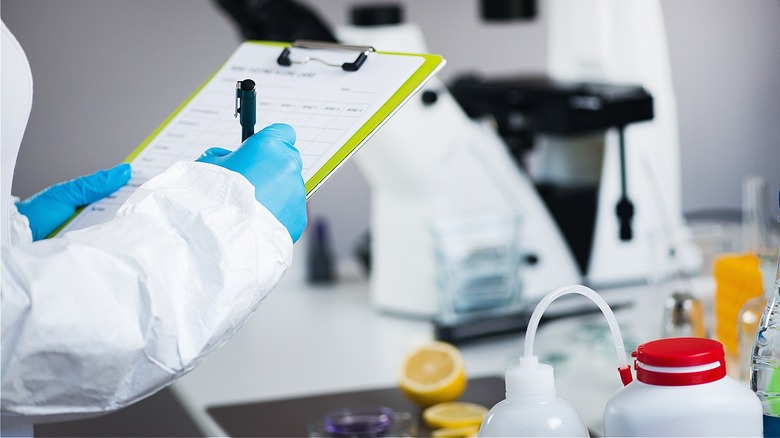The Food That Can Have Up To 60 Bug Bits Per 100 Grams
If you were dining at a restaurant and found a hair or something that looked like a part of an insect, you'd have a fit, right? You'd probably send it back and expect a new meal, on the house, or perhaps you'd simply lose your appetite and leave without paying the bill. A pretty normal reaction, but what if you discovered that the United States Food and Drug Administration (FDA) actually allows certain foods to be sold with bug pieces in them?
No, this doesn't mean you have to worry about buying a box of cereal or a jar of mayonnaise and finding an entire American cockroach that was allowed to be packaged inside. According to CNN, "the FDA has established standards to keep food defects to a minimum." Included in these "defects" are bug particles, rodent hair, or rodent excrement.
One food in particular is permitted to have up to 60 bug fragments in every 100 grams. Can you guess what it is? Here's a hint: You probably ate it on Halloween.
A subsample of this food contains 90 or more bug fragments
The Food and Drug Administration claims that "chocolate in six 100-gram subsamples contain an average of 60 or more insect fragments per 100 grams." It further states that "any one subsample contains 90 or more insect fragments." Yup, you heard that right. Your favorite chocolate bar might just contain insect parts. So what's the reason behind this mind-boggling allowance? Why are these particles permitted to be included in chocolate and other food that ends up in grocery stores?
The short and simple answer is ... because it can't be avoided. Like it or not, bugs are everywhere. Terro estimates that one person could eat as many as 140,000 bug bits in a 12-month time frame. They're in our homes, in our buildings, on our shoes, and in the places that food is processed and stored (via Green Queen).
According to the U.S. Food and Drug Administration, "It is economically impractical to grow, harvest, or process raw products that are totally free of non-hazardous, naturally occurring, unavoidable defects." The good news is, the fragments are small enough to not be detected with the naked eye. So if you have chocolate candy bars in your pantry, you don't have to throw them out. Although the thought may be repulsive, the FDA considers the insect filth in chocolate to be safe and natural.

